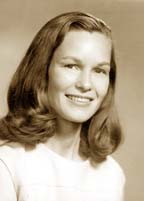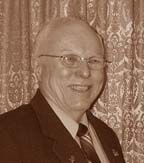 |
Jolyne Sample 1934 - 2001
These pages would not have been possible without the help and encouragement of Sewell and Jolyne Sample who shared the results of their research. |
 |
Jolyne Sample 1934 - 2001
These pages would not have been possible without the help and encouragement of Sewell and Jolyne Sample who shared the results of their research. |
Please visit the Sewell Genealogy Site Map for other pages in this series.
| Click for
PDF index |
To see where all this information came from, please click on Sources.
The Magna Charta
The following excerpt is taken from
Fredrick Lewis Weis: The
Magna Charta Sureties, 1215.
4th edition, Baltimore: Genealogical
Publishing Co., Inc., 1991.
"The Magna Charta (or Carta) is generally considered to be the cornerstone of Anglo-Saxon law, since it is the earliest agreement between sovereign and subject (i.e. the noble class) on the rights of both parties —— that is, what each can do, and the limitation of powers. In addition, the Great Charter set up watchdogs for both sides: twenty-five men representing the barons, which twenty-five signed for the barons and were sureties for the baronial performance, and the friends of the king, who were named in the Charter.
"The story of the Charter and the study of its wording and provisions fills many books. The reader may perhaps find the most interesting and useful of these to be a nineteenth-century work by Richard Thomson entitled An Historical Essay on the Magna Carta of King John, published in London in 1828. At the head of each page is a shield of arms of a person who was in some way related to the Charter or the events surrounding it, and these arms are indexed in tables beginning on page xvii. The text of the Charter is given, accompanied by essays on content, but of primary interest to the users of the present volume are the extensive biographical notes on the Sureties, and on those individuals mentioned in the text of the Charter, or connected with it. This book runs over 600 pages.
"Of the twenty-five Sureties only seventeen have identified descendants. Four had no known surviving issue; the issue of one died out in the third generation, and of another in the fourth. Nothing whatever is known of William de Hardell and his family. The twenty-fifth, Richard de Percy, left only an illegitimate son, Henry, to whom he gave the manor of Settle (Yorks). Henry is known to have had a son Alexander, but further information about this line is lacking, and since Henry surrendered his manor of Settle to his cousins, efforts to learn more by land records have been unsuccessful."
For the text of the Magna Charta, click on
Magna
Charta
courtesy of Fordham University's
Internet
Mediæval Sourcebook.
 |
 |
 |
 |
|
|
|
|
|
| Family records and traditions have long hinted at a descent from the Magna Charta Surety Saher de Quincy, and thanks to records shared through the kindness of Sewell V. Sample and John Rees we now have a connection. Click here or on the coat of arms for details. |  |
 |
 |
 |
|
|
Longespée |
Lord of Galloway |
 This page was set up by Robert Sewell in July 2006 to show the descent
of the Sewell Family from persons connected with the Magna Charta.
Robert Sewell graduated from McMaster University (Hamilton, Ontario, Canada)
in 1967 with a B.Sc. degree in chemistry. After a year of studies
at the University of Toronto's College of Education, he taught high school
science in Collingwood, Ontario for a year and then taught chemistry, physics
and general science in Hamilton, Ontario for twenty-nine years. Robert
Sewell retired from teaching in June 1998.
This page was set up by Robert Sewell in July 2006 to show the descent
of the Sewell Family from persons connected with the Magna Charta.
Robert Sewell graduated from McMaster University (Hamilton, Ontario, Canada)
in 1967 with a B.Sc. degree in chemistry. After a year of studies
at the University of Toronto's College of Education, he taught high school
science in Collingwood, Ontario for a year and then taught chemistry, physics
and general science in Hamilton, Ontario for twenty-nine years. Robert
Sewell retired from teaching in June 1998.
 |
Please visit the Sewell Genealogy Site Map for other pages in this series.
Click to return to the top of this page.